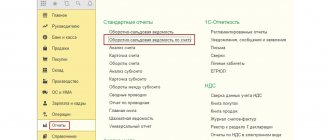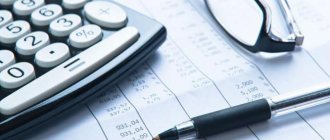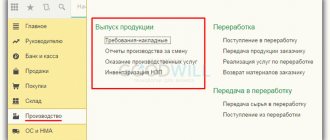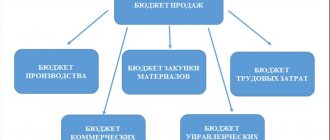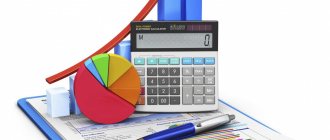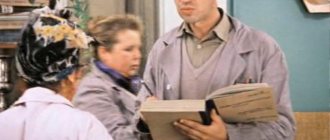One of the ways to advertise and find new customers is to participate in exhibitions where samples of products are shown to potential buyers.
As a rule, such copies lose their original appearance and are subsequently either sold at a reduced price or written off. Tengiz Bursulaya, leading auditor of AKF MIAN CJSC, spoke about the accounting of exhibition samples.
In accounting, products intended for sale are accounted for in account 41 “Goods” (clause 2 of the Accounting Regulations “Accounting for Inventories” PBU 5/01, approved by Order of the Ministry of Finance dated June 9, 2001 No. 44n, Instructions for the Application of the Plan accounting accounts of financial and economic activities of organizations, approved by Order of the Ministry of Finance of October 31, 2000 No. 94n).
As for exhibition items, since the products may still be sold in the future, they continue to be counted as goods intended for resale. Consequently, the transfer of samples to the exhibition is reflected by an entry in subaccounts opened to account 41, or in analytical accounting, for example, like this:
Debit 41-5 Credit 41-1
– goods were transferred from the warehouse to the exhibition.
At the end of the exhibition and when transferring the samples to the warehouse, an entry is made in the accounting records as a debit to account 41-1 in correspondence with a credit to account 41-5. Such goods are accounted for at actual cost, which does not change in the future, except for cases established by the legislation of the Russian Federation (clauses 5, 12 of PBU 5/01).
Documenting
The internal movement of goods between divisions of one company - the warehouse and the department that will organize participation in the exhibition - is not regulated in any way. The organization itself decides what documents to formalize this procedure. For example, you can prepare the following set of documents: an order from the manager on the allocation of samples for the exhibition (Clause 2.2.6 of the Methodological Recommendations, approved by letter of Roskomtorg dated July 10, 1996 No. 1-794/32-5) - such an order can be given to him in orally; two invoices for internal movement in the TORG-13 form (Decree of the State Statistics Committee of December 25, 1998 No. 132) or in the company’s own form. The first invoice is for moving the demonstration goods to the exhibition, while in the “Sender” column you need to indicate the structural unit - the warehouse, and in the “Recipient” column - the department that will organize participation in the exhibition; the second is for moving from the exhibition to the warehouse.
On a note
By virtue of paragraph 4 of clause 4 of Article 264 of the Tax Code of the Russian Federation, non-standardized advertising expenses include expenses for the markdown of goods that have completely or partially lost their original qualities during exposure.
Conditions for exemption of R&D work from VAT
The legislation defines the requirements on the basis of which enterprises have the right not to charge VAT on research work:
- The work is carried out at the expense of the budget and Russian funds - research, technological development, support for scientific activities.
- Provided that the enterprise belongs to educational institutions or scientific activities when concluding contracts for economic purposes. Educational institutions must have a license to operate.
For educational and scientific institutions, the source of funding is not taken into account. The benefit, which does not depend on the source of financing, is applied both by the performers themselves and by third parties (co-executors) involved in the execution of the project. In this case, co-executors must also belong to the field of activity in the field of science or education.
Product losses
During the event, goods may completely or partially lose their consumer qualities or even become completely unusable due to damage or breakdown. In this situation, we should talk about non-standardized commodity losses. They can be documented in the following way: in accordance with the law, any fact of the organization’s economic activity is reflected on the basis of the primary accounting document. Let me remind you that this rule is enshrined in Article 9 of the Federal Law of December 6, 2011 No. 402-FZ.
As you know, the forms of primary accounting documents are approved by the head of the organization on the recommendation of the official responsible for maintaining records. At the same time, the development and approval of independent “primary” forms is a rather labor-intensive matter, so a company, as a rule, uses forms approved by the State Statistics Committee to reflect the facts of economic life.
To document losses of goods due to damage, damage, scrap of goods, Goskomstat Resolution No. 132 approved the following forms of documents: act on damage, damage, scrap of inventory items (form No. TORG-15); act on write-off of goods (form No. TORG-16).
To draw up an act in the TORG-15 form, a special commission is created in a trade organization, which includes a representative of the company administration and a financially responsible person. The document is drawn up in triplicate. The act indicates all the information about the product subject to markdown or write-off, namely: its name, price, quantity, article, grade, the reasons for the loss of goods, as well as the possibility of its further use - sale at a reduced price, disposal or destruction . The accountant must check the document signed by all members of the commission for completion and submit it for approval to the head of the organization, who makes the final decision regarding the use of the product.
One copy of the act remains in the accounting department, where, on its basis, losses are written off, the second remains in the department where product damage was detected, and the third is handed over to the financially responsible person.
If the goods are not subject to further sale, then act No. TORG-16 (or a document in the company form) is drawn up. It is also drawn up in triplicate and signed by the members of the commission. The act is approved by the head of the company, and he also decides from which source the damaged goods are written off. The act indicates all information about the product, as well as the reason for its write-off.
If the goods are subject to destruction, then in order to avoid their repeated write-off, they are destroyed in the presence of members of the commission.
How to write off shortages during inventory
In order to write off shortages, you must take inventory of the goods in the warehouse. We wrote about this in a separate article “Trade Schools” about taking inventory. The results of the inventory are documented in documents INV-3, INV-19 and INV-26, as well as the issuance of an order on the results of the inventory and the punishment of financially responsible persons.
After conducting an inventory, having determined one of the reasons for write-off, you can take any further actions: fine those responsible, classify expenses as natural loss, make changes to accounting and make accounting entries. As a last resort, if the culprit is not found and the shortage cannot be written off without questions from the tax authorities, open a criminal case.
For example, no one should pay for shortages of goods or their damage within the limits of natural loss. And if these costs are higher than normal, they are covered at the expense of the guilty parties. If the perpetrators are not identified, then losses from the shortage are written off to the financial results of the organization. In fact, if the guilt of the personnel is not proven, and the goods disappear, then the company bears losses.
How to determine the price of a product that is subject to write-off
Shortage amounts are written off at the actual cost of the goods: the purchase price plus the costs of its delivery and storage.
If you are selling something that, after purchasing, needs to be stored in one container, for example, cereals, sugar, flour, then you have the right to independently prescribe in your Accounting Policy how to determine the amount of the shortage. If you have lost 20 kg of flour, then the cost of the missing goods can be calculated as 20 kg multiplied by the retail selling price of this flour.
Sales at a reduced price
If an exhibition copy has lost its original appearance or partially lost its consumer qualities, then it can subsequently be sold at a reduced price. In this case, you should pay attention to the following points.
Thus, in accounting there is a need to recognize a reserve for reducing the value of inventories (clauses 2, 3 of the Accounting Regulations “Changes in Estimated Values” (PBU 21/2008), approved by Order of the Ministry of Finance dated October 6, 2008 No. 106n).
A change in the estimated value when the cost of inventories decreases is included in the company’s other expenses (clause 4 of PBU 21/2008, clause 11 of the Accounting Regulations “Expenses of the Organization” PBU 10/99, approved by Order of the Ministry of Finance dated May 6, 1999 No. 33n, p 20 Guidelines for accounting of inventories, approved by Order of the Ministry of Finance dated December 28, 2001 No. 119n).
The amount of the reserve is determined as the difference between the current market value of the product and its actual cost. According to paragraph 9 of PBU 5/01, the current market value is understood as the amount of funds that can be received as a result of the sale of assets. It is determined on the basis of available information and must be confirmed (paragraph 3, 7, paragraph 20 of the Guidelines for accounting for inventories).
The creation of a reserve in accounting is reflected in the debit of account 91 “Other income and expenses”, subaccount 91-2 “Other expenses”, in correspondence with the credit of account 14 “Reserve for reduction in the value of material assets” (clause 20 of the Guidelines for accounting for inventories , Instructions for using the Chart of Accounts):
Debit 91-2 Credit 14
– a reserve has been created in accounting.
If at the end of the year the exhibition samples were not sold, then in the balance sheet (section “Current assets”, line “Inventories”) they will be reflected at actual cost minus markdowns. The amount of the reserve for a decrease in the value of inventories is indicated in the explanation to the balance sheet in section 4.1 “Availability and movement of inventories” (Section 4 of Appendix No. 3 to Order of the Ministry of Finance dated July 2, 2010 No. 66n).
On a note
The procedure for calculating the markdown of the Tax Code has not been specified; accordingly, when determining its value, the Law on Accounting can be applied.
I believe that a markdown can be recognized as an expense in an amount calculated as the difference between the cost of purchasing samples and the market value.
The concept of prototypes and actions with them
A prototype is understood as a product created on the basis of newly developed technical documentation in order to determine the feasibility of its production release. Scientific and educational enterprises are involved to develop technical documentation and produce a prototype. Features of prototypes as an object of transfer to the customer:
- Prototypes for analysis of compliance with their documentation are an object for experimentation and should not be intended for subsequent implementation.
- It is assumed that prototypes fail or are destroyed during testing.
- A research, scientific, educational institution does not have the right to use the product at its own discretion, as in the case of their ownership.
- Prototypes that receive a positive assessment are transferred to the customer, unless they are created within the framework of the development of one enterprise and technological process.
Exemption from VAT when transferring prototypes for research is based on the absence of a transfer of ownership rights that the performer does not have (
Income tax
As for the formation of a reserve for reducing the value of material assets for income tax, Chapter 25 of the Tax Code of the Russian Federation does not provide for such a possibility.
At the same time, by virtue of paragraph 4 of clause 4 of Article 264 of the Tax Code of the Russian Federation, non-standardized advertising expenses include expenses for the discounting of goods that have completely or partially lost their original qualities during exposure.
The procedure for calculating markdowns is not defined by the Tax Code; accordingly, according to paragraph 1 of Article 11 of the Tax Code of the Russian Federation, when determining its value, the Accounting Law can be applied. I believe that a markdown can be recognized in expenses in the amount calculated as the difference between the costs of purchasing samples and the market value determined by an expert. In this case, the amount of the markdown will be equal to the amount of the reserve created in accounting.
On a note
When selling a product for which a reserve was created to reduce the price, its purchase price will correspond to the difference between the actual cost and the amount of the restored reserve. In this regard, there are no differences between accounting and tax profit.
Results
The procedure for writing off expired goods has its own nuances in terms of documentation, the need for an examination and accounting for expenses (losses) from write-off for tax purposes.
Sources:
- Labor Code of the Russian Federation
- Law of the Russian Federation dated 02/07/1992 N 2300-1 “On the protection of consumer rights”
- Tax Code of the Russian Federation
You can find more complete information on the topic in ConsultantPlus. Free trial access to the system for 2 days.
Application of PBU 18/02
The amount of markdown of goods exhibited at the exhibition is recognized in the same month in which the reserve is created.
In this regard, there are no differences in accounting and tax accounting, which are taken into account in the manner established by the Accounting Regulations “Accounting for Income Tax Calculations” PBU 18/02, approved by Order of the Ministry of Finance dated November 19, 2002 No. 114n.
When selling a product for which a reserve was created to reduce the price, its purchase price will correspond to the difference between the actual cost and the amount of the restored reserve. In this regard, there are no differences between accounting and tax profit.
How to write off stolen goods
To write off stolen goods, you need to conduct an inventory, as well as receive written explanations from financially responsible persons regarding the shortage.
Next, an order is issued to reflect the shortfall in accounting and the sources of its repayment. If it indicates the write-off of stolen goods as losses, then this must be reflected in accounting, and if the order states that the materials must be transferred to the police, you need to write a statement and transfer it there along with the results of the inventory.
If the guilty person is found, the shortage will need to be attributed to him; if the criminal is not found, then the police will refuse to initiate a criminal case. In this case, the stolen goods will need to be written off as losses, which are accepted in tax accounting along with documents confirming the crime.
Subscribe to the MySklad newsletter to receive new articles about trading
